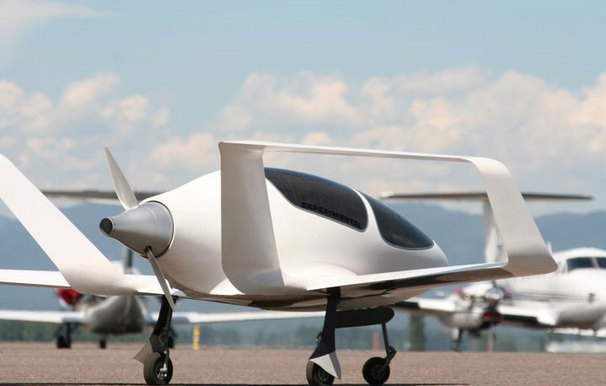'Synergy' Aircraft Promises Better Fuel Economy than Cars

Most people think of flying as faster but more expensive than driving. But an unusual aircraft project that competed in NASA's 2011 Green Flight Challenge is promising something new — a personal airplane with better fuel economy than many family cars.
The "Synergy" aircraft could carry up to five people with a fuel efficiency of 40 miles per gallon, according to an online posting at the Experimental Aircraft Association website. The aircraft's makers also claim its design can achieve 10 times the fuel economy of a small jet at 10 percent of the usual cost — and they hope to make the plane a reality by appealing to online donors at the crowd-funding website Kickstarter.
"In this second century of flight, we believe that ordinary families should have fast options to travel where they want, when they want, in quiet safety, with better economy than a car," said John McGinnis, team leader of Synergy, in the Kickstarter project description.
Synergy's special ingredient comes from the aircraft's double box tail shape. That design supposedly cuts back on the aerodynamic drag that slows down typical aircraft, so that the Synergy airplane can fly with much better fuel efficiency. Early flight tests with a scale model one-fourth the size of the real thing have already shown promise.
No top speeds have been disclosed by the Synergy team, but the family of aircraft designers and builders is aiming for something capable of 100-450 mph speeds and a flight range of at least 500 miles. The 32-foot wingspan aircraft flies on a Delta Hawk Bio-diesel fueled engine — a propeller engine as opposed to a jet engine.
The Synergy project has attracted about $3,000 out of its $65,000 Kickstarter goal as of May 15. If it raises $65,000, that would be enough to keep the aircraft makers going until their next milestone in September. That would be close enough for another funding round to make the final push and complete building the full-size aircraft.
Such an aircraft won't replace cars in people's homes, or even represent a "street-legal airplane" like Terrafugia's Transition. But it could make flying much more affordable for many more families — and perhaps someday inspire a new generation of more fuel-efficient jetliners and military jets.
Get the world’s most fascinating discoveries delivered straight to your inbox.
This story was provided by InnovationNewsDaily, a sister site to LiveScience. Follow InnovationNewsDaily on Twitter @News_Innovation, or on Facebook.
 Live Science Plus
Live Science Plus







